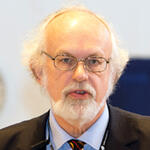Blog
Responding to crises - a personal approach to the conference theme
Crisis can mean different things to different people. In response to this week's WIDER conference, we must ask ‘Which crises, and crises for whom?’. The crises with the biggest impact may be long-term rather than short-lived.
A good analytical approach, I believe, is to prioritize both the environment as the basis for human development, as well as efforts to help the poorest achieve economic development. Environmental and poverty concerns must be combined, not pitted against each other.
Times have changed but crises continue to emerge
I was born in 1952. During my lifetime, the world has changed considerably. I still, however, find it surprising when I step back and look at some of the issues on which I have worked (analysis and campaigning) since the late 1970s. In spite of the emergence of new sets of problems, positive change has occurred. The military dictatorships of Latin America have gone. Apartheid has fallen — although inequality in South Africa persists. The Cold War has ended. Substantial advancement, but not complete success, is a fair verdict on the Millennium Development Goals. Now, I am not advocating facile optimism or suggesting that ‘things can only get better’. Today’s crises are at least as serious as those of the past. Arguably more so.
This week’s conference
I see UNU-WIDER’s 'Responding to crises' conference as a great chance for a highly expert and diverse group of people to engage in debate without having to advocate national positions or defend ideological positions. It comes a year after the world community committed to action on the Sustainable Development Goals (SDGs) as well as climate change.
To bring attention to crisis response, UNU-WIDER has produced a topical video and Tony Addison, among others, has written about why we need to think about crises during the lead up to the conference.
To spend some time thinking, before we arrive in the conference room, about the complexity of the challenges will certainly help in identifying desired trajectories in the ‘Sustainable Development Goals era’ — 2015-30.
Looking back from 2030 – ‘No one Left Behind’ or ‘Crisis World’?
Let’s do an exercise, a warm up, for the sessions by thinking about what we already know and feel about current crises, and what we expect in the future. This is the kind of thing you can do on a plane on the way to the conference, or in half an hour over a drink.
Let’s imagine we have three timelines stretching over the next fifteen years from 2016 to 2030. One represents an optimistic scenario (No one Left Behind), the second shows the worst case (Crisis World), and the third is your attempt at a realistic evaluation (What Will Happen?).
Let’s start with first two timelines. What types of emergencies and advances might occur? For example, in the no-one-left-behind scenario we could add achievements which might transpire as we move to fulfilment of the SDGs, such as continued improvements in under-5 mortality. In the crisis world scenario, we might put the natural disasters, health crises and other emergencies that we might encounter if things do not go well.
Now we have one scenario left: our prediction for what will happen. As you contemplate the challenges and changes you have already identified, think about what really lies ahead. It is hard to do. That is the point. We just don’t know.
The takeaway
Simple exercises like this can shed light on the difficulties involved in planning for the future — much less for unexpected emergencies and critical situations on the world stage. This is why events such as the one this week are so vital.
Prediction is not about tapping into fatalist assumptions of what will happen no matter what we do — something often accompanied by the assumption ‘nothing can be done anyway’. Prediction is about envisaging alterative futures and galvanizing support for trajectories that increase the chance of better, rather than worse, outcomes. With this conference, UNU-WIDER is giving us the chance to help in planning for the common good.
 Join the network
Join the network



